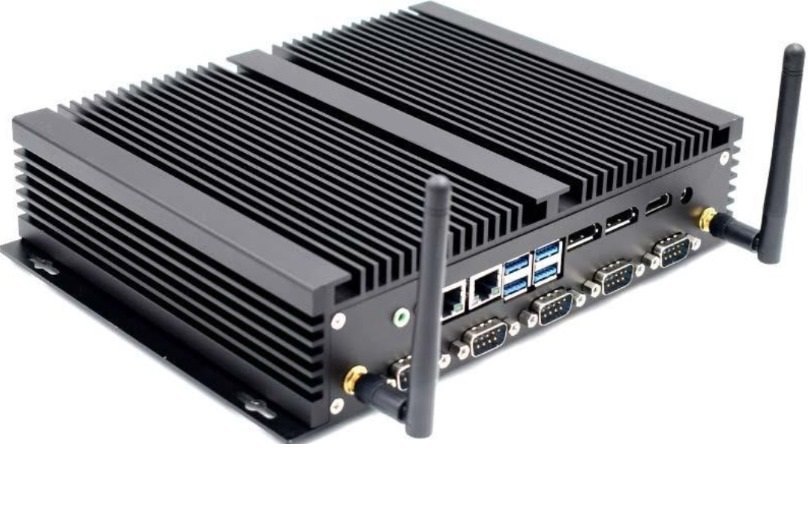In the ever-evolving landscape of technology, the search for more efficient, silent, and compact computing solutions has led to the development of fanless computers. These innovative devices get significant attention for their unique design and impressive capabilities.
Overview of Fanless Computers
At their core, fanless computers are devices that operate without traditional cooling fans. Instead of relying on fans to dissipate heat generated by internal components, these computers utilize alternative cooling methods such as passive cooling systems, heat sinks, and advanced thermal management techniques.
The Evolution of Fanless Technology
The concept of fanless computing isn’t entirely new, but advancements in materials, processor efficiency, and thermal design have significantly propelled its evolution. Early attempts at fanless systems were limited by the power and heat output of components, making it challenging to achieve efficient cooling without active fans.
However, with the advent of energy-efficient processors and improvements in heat dissipation technologies, fanless computers have become increasingly feasible. Today, these machines can handle demanding tasks across various industries, from industrial automation to consumer electronics.
Advantages of Fanless Computers
Silent Operation
One of the most notable advantages of fanless embedded PC is their silent operation. By eliminating traditional fans that generate noise, these devices offer a whisper-quiet computing experience. This characteristic makes them ideal for settings where noise pollution is a concern, such as offices, libraries, or home entertainment systems.
Enhanced Reliability
The absence of moving parts like fans reduces the risk of mechanical failure, enhancing the overall reliability and longevity of fanless computers. This feature is particularly crucial in environments where dust or debris could affect traditional cooling systems, as fanless designs ease these concerns.
Improved Durability
Fanless computers often boast a ruggedized design due to their lack of delicate moving parts, making them more resistant to shock, vibration, and external damage. This durability is advantageous in industrial settings or applications that demand robust hardware capable of withstanding harsh conditions.
Energy Efficiency
With their efficient thermal management systems, fanless computers consume less power than their fan-equipped counterparts. This energy efficiency not only reduces operational costs but also contributes to a smaller carbon footprint, aligning with the growing focus on sustainability in technology.
Compact and Space-Saving
The absence of bulky cooling fans allows fanless computers to be more compact and space-efficient. This compact form factor makes them ideal for embedded systems, IoT devices, and applications where space constraints are a concern.
Also Read: Exploring the benefits of fanless computers: A comprehensive guide
What are the Applications of Fanless Computers
Industrial Automation
In industrial settings, where reliability and durability are paramount, fanless computers find extensive use. The power automation systems, control machinery, and manage data collection in environments where traditional computers might struggle due to dust, moisture, or extreme temperatures.
Medical and Healthcare
The silent operation and reliability of fanless computers make them well-suited for medical equipment. From diagnostic devices to bedside monitors, these computers play a crucial role in various healthcare applications, providing stable and efficient computing power without generating disruptive noise.
Digital Signage and Kiosks
Fanless computers are popular choices for digital signage players and interactive kiosks due to their compact design and reliability. They can operate continuously without the need for frequent maintenance, making them ideal for advertising displays and self-service kiosks in public spaces.
Home Entertainment and Consumer Electronics
In the realm of consumer electronics, fanless PCs have found a niche in home entertainment systems. From media centres to gaming consoles, these devices offer powerful performance without disturbing the viewing or gaming experience with fan noise.
Edge Computing and IoT
With the rise of edge computing and the Internet of Things (IoT), fanless computers are instrumental in powering smart devices and edge computing nodes. Their compact size, reliability, and energy efficiency make them a cornerstone in building the infrastructure for interconnected devices and decentralized computing.
Choosing the Right Fanless Computer for Different Applications
The advancements in the field of technology have made it possible to design equipment that suits the specific requirements of various professionals. The fanless computer is a breakthrough that caters to the needs of industries such as industrial automation, digital signage, and intelligent transportation. These computers are energy-efficient, durable, and capable of performing under extreme temperatures.
1. Purpose of Fanless computers:
Before you start search for a fanless computer, it is crucial to understand the purpose of such a device. Fanless PCs are designed to work in places where space is a premium, and the noise generated by traditional computers can cause disturbances. The fanless computer can operate silently, making it suitable for industries that require a quiet environment. They are also resistant to dust, dirt, and moisture, making them perfect for harsh industrial environments. When choosing a fanless computer, it is essential to consider these factors and ensure that it can perform well under such conditions.
2. Processing Power:
The processing power of a computer is an important factor when selecting a fanless computer. Depending on the application, you will need different levels of processing power, which can range from a low-performance processor to high-performance systems. For instance, applications such as digital signage can perform well with low-power options. In contrast, tasks that require more significant computing power, such as AI-based inference applications, require high-performance processors. Therefore, it is essential to consider your application’s processing demands and choose a fanless computer that provides the necessary computing power.
3. Thermal Solutions:
Fanless computers are designed to draw heat away from the processor and dissipate it without relying on a fan. However, this can cause the device to generate a significant amount of heat, causing internal damage and decreased performance. It is thus imperative to choose a fanless computer that has an efficient cooling system to keep the device’s internal components operating at an optimal temperature. Thermal solutions involve the use of heat sinks, thermal pads, and chassis designs to improve heat dissipation. The size of the fanless computer and the operating conditions will determine the cooling system’s requirements.
4. Connectivity:
Connectivity is another critical factor to consider when choosing a fanless computer. Depending on your application’s requirements, you may require multiple options for connecting peripheral devices such as cameras, network interfaces, and USB devices. A fanless computer with numerous input/output ports will come in handy when dealing with these devices. Also, check whether the ports support the required speeds and protocols to ensure seamless connectivity. It is vital to consider your specific application requirements carefully and choose a fanless computer that provides the necessary connectivity options.
5. Extended Lifespan:
The extended lifespan of a fanless computer is another factor that makes it an ideal choice for many businesses. Fanless PCs have a longer lifespan than traditional computers since they do not have moving parts that can fail. They have a lower failure rate and require less maintenance, making them cost-effective in the long run. Before making a purchase, it is crucial to assess the warranty offered by the vendor and check whether it covers any damages resulting from harsh operating conditions.
Conclusion:
In conclusion, choosing the right fanless computer involves considering various factors such as processing power, thermal solutions, connectivity, and extended lifespan. These factors will guide you in selecting a fanless computer that meets your application requirements. Whether in industrial automation, healthcare, consumer electronics, or emerging IoT applications, fanless computers continue to carve a path as silent yet powerful computing solutions, reshaping our digital landscape.



